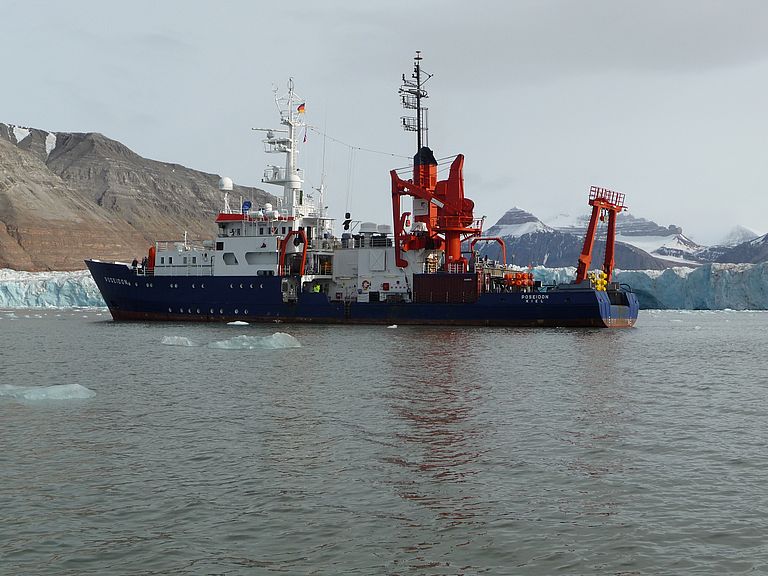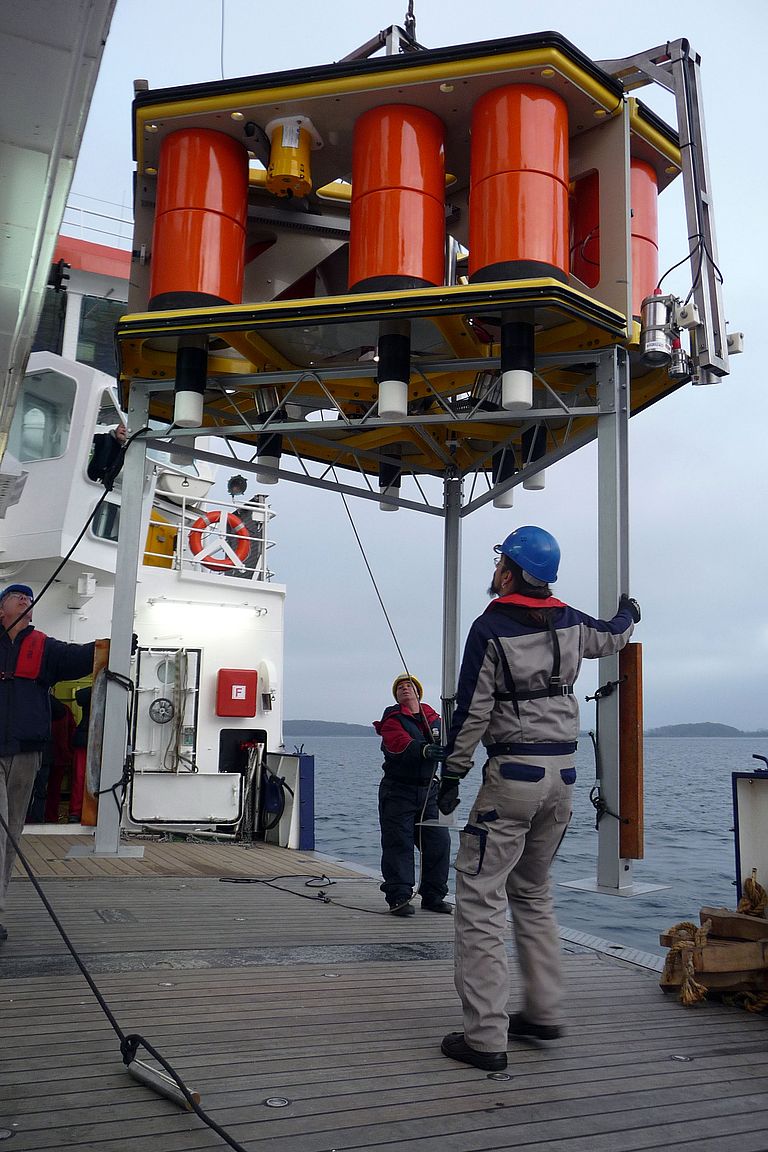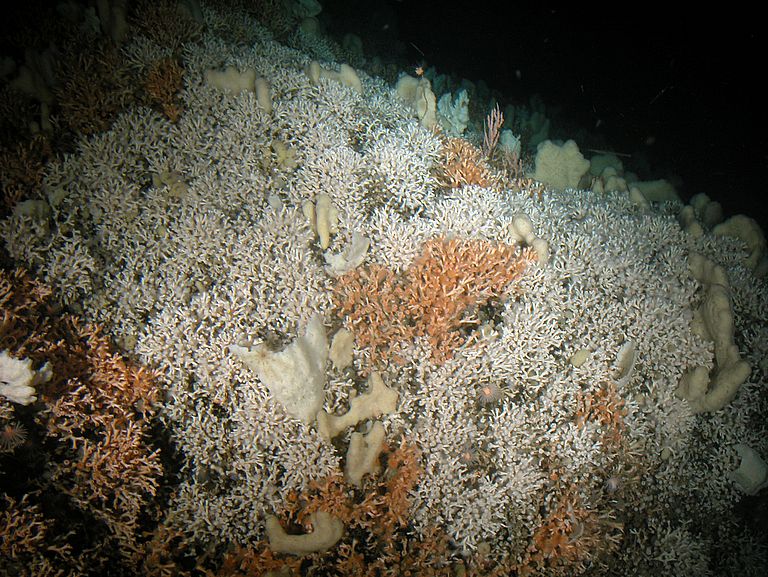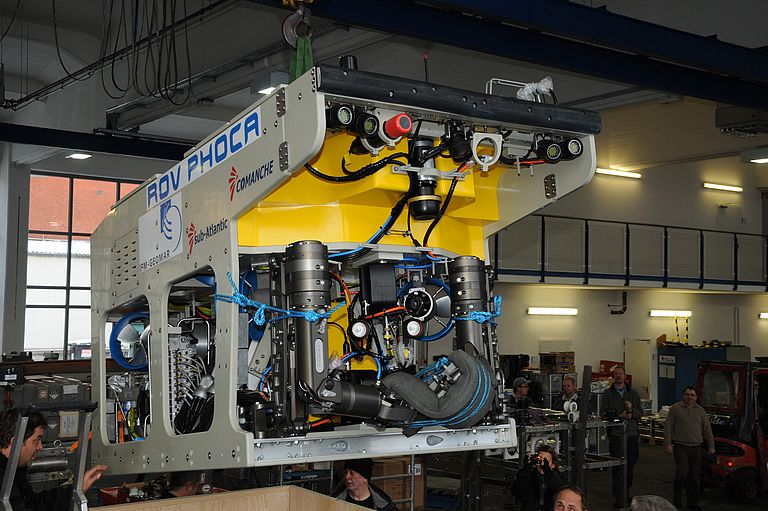First Mission for New Ocean Floor Observatory
GEOMAR installs MoLab on a cold water coral reef in the Norwegian Sea
Up to now marine scientists investigating complex processes on the ocean floor have had limited choices. If they wanted to examine large areas on the ocean floor, they could do it only for short periods of time, because research vessels are expensive to use. If they wanted to examine long term processes, they could use autonomous observatories, but they would get measurements from only one point in the ocean. Scientists and technicians of the GEOMAR | Helmholtz Centre for Ocean Research Kiel (Germany) have now developed a modular multidisciplinary seafloor observatory, MoLab, which is able to measure biological, physical, chemical or geological parameters over a period of several months and a range of several square kilometres. On Saturday, 26th May, MoLab set off on board RV POSEIDON on its first scientific mission. “We will install MoLab on a cold water coral reef off the coast of northern Norway. We want to find out why the corals grow at this specific place and what the impact of climate change on the corals will be “, says Dr Olaf Pfannkuche, marine scientist at GEOMAR and chief scientist of the cruise.
MoLab consists of several different devices that can be combined according to the specific scientific question. Among the available modules are single autonomous deep sea observatories (so called “Lander”) in different configurations and sizes as well as oceanographic moorings which all have the same basic sensor systems. The core of the MoLab System is a communication module integrated in one of the moorings. “This module communicates with all other modules in the measuring field using acoustic signals. Thus for the first time we will be getting a synchronized and coherent data record from several measurement devices at the ocean floor”, explains Dr Pfannkuche. Because no cable connections have to be established in the deep and because the single modules are relatively compact, it is possible to set up or change the MoLab System during an experiment even with medium sized research vessels like RV POSEIDON. To maintain the system in the deep, the scientists will use the brand new ROV PHOCA.
Thus MoLab will enable scientists to investigate the interaction of multiple factors on the ocean floor and in the bottom water layer inexpensively, flexibly and long term. “No process in the ocean stands alone. The topography of the ocean floor influences currents, currents influence the distribution of nutrients and thus biology, organisms build up the ocean floor anew after their deaths. If we want to make progress in research about global change we have to consider all these multiple interactions”, underlines Dr Pfannkuche.
The cold water coral reef chosen by the scientists for the first MoLab mission is located in Stjernsund in northern Norway in a water depth of 220 to 350 metres. It’s one of the northernmost cold water coral reefs in Europe. For four months MoLab will measure the basic conditions for the growth of the corals and investigate the interactions within the reef’s ecosystem. For this MoLab will measure currents, tides, water temperatures, salinity, nutrients, and the consumption of oxygen in and around the reef. Cameras will observe the reef continuously.
The data set thus obtained will later form the basis for numerical simulations. The aim is to better understand oceanographic-biological processes in general. “The new opportunities we have with an observatory like MoLab will improve our knowledge about extremely sensitive ecosystems like arctic cold water corals considerably”, says Dr Pfannkuche.
Detailed information about expediton POS434 you find here
Contact:
Jan Steffen (GEOMAR, Communication & Media), Phone: +49 431 600-2811, jsteffen(at)geomar.de
![[Translate to English:] Die Basiskonfiguration des MoLab Messfeldes besteht aus: einem Master Lander (MLM), drei Satelliten Landen (SLM), drei Eddy Correlation Modulen (ECM) und zwei Verankerungsmodulen (VKM). Für die notwendige detaillierte Messfel The basic configuration of an MoLab measuring field. It consists of one Master Lander (MLM), three satellite lander (SLM), three eddy correlation modules (ECM) und two mooring modules. For the maintainance of the modules ROV PHOCA (E) is being used. Graphic: MoLab-AG, GEOMAR](/fileadmin/_processed_/4/f/csm_molab_komplett_MoLab-AG-GEOMAR_bfbd68e5b7.jpg)






